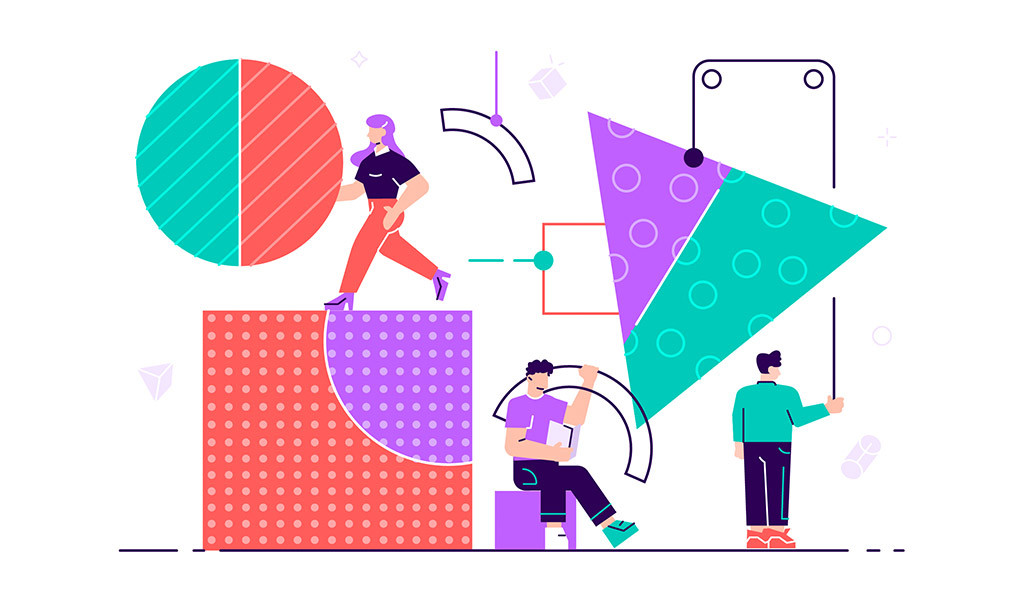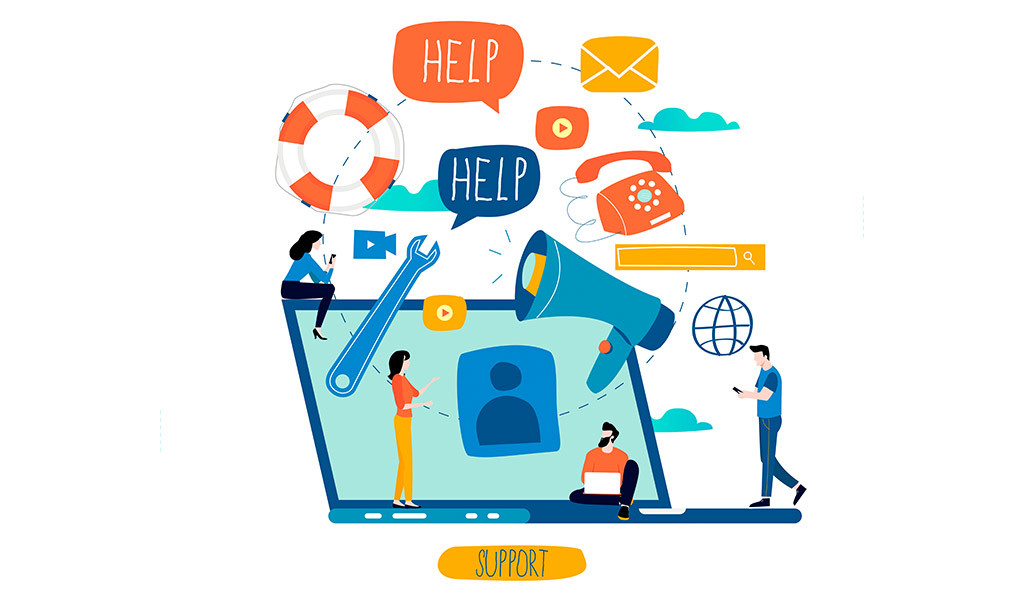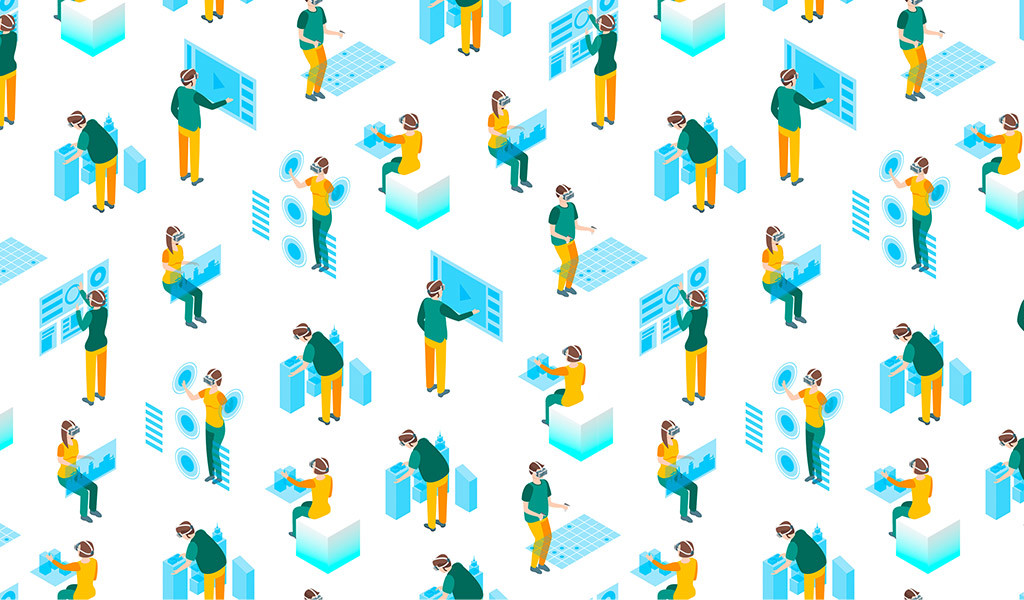
In today’s fast-paced world of on-demand services, entertainment, and products, customers have high expectations. Consumers now expect to have a good customer experience, an experience that works for them based on their preferences. This is no easy feat for business, no matter how large or small they are. There’s a lot that goes into creating a great customer experience, one that will create happy customers and keep them coming back to your business. One key element of great customer experience is less friction in the customer journey. Customers don’t want to deal with businesses that make them jump through hoops and build unnecessary complexity into their buying process. Today we’re going to look at how to achieve a frictionless customer experience for your business.
What Is a Frictionless Customer Experience?
A frictionless customer experience is all about creating a seamless buying and or signup experience. It’s about identifying where friction exists in your entire customer journey and ruthlessly cutting it. There are plenty of places friction might exist in your customer journey, and we’ll delve into these later in the article, but the main point to take note of is that any time your customer is interacting with your business, it should be as seamless and convenient as possible.
It’s now easier than ever to get to know your customers and identify what they want and how to deliver these exact moments to them. By this, we mean that you can use modern technology, data collection, and innovative ideas to not just reduce unnecessary redundancy in your customer journey, but to also offer them something more. For example, menswear company Thread reduces friction in their buying process by asking customers to fill out a questionnaire on their style preferences. The questionnaire is simple and fun to do but also ensures the customer has a more tailored and friction-free experience because they will then only be suggested items of clothing that match their style. This is an example of going one step further and setting yourself apart from your competition, something which can greatly increase your sales when done right.
Why Is a Frictionless Customer Experience Important?
Put simply, less friction equals a better customer experience and customer experience is extremely important in the digital age. In fact, the annual Digital Trends report by Econsultancy and Adobe, 20% of B2B companies said the single most exciting opportunity for 2020 is customer experience. Customer experience came in top on this survey, above content marketing, data-driven marketing, video marketing, and social marketing. So why is customer experience so exciting to businesses? Let’s take a look.
Customers Are Willing to Pay More for a Great Customer Experience
46% percent of consumers said they would pay more for a friendly and welcoming experience, and 55% said they’d pay more for a fast and efficient service.
Impulse Purchases
Approximately 52% of consumers have made impulse purchases after receiving a personalized experience. You can reduce friction in your customer journey by providing high-quality personalized content to your consumers, reducing the need for them to look around your website or app and potentially look through lots of products that aren’t a good match for them.
Investing in Customer Experience Earns More Money for Your Business
According to Temkin Group, companies that earn $1 billion annually can expect to earn an additional $700 million within three years of investing in customer experience. Even if you’re not a $1 billion company, you can still expect to see a marked increase in your earnings by investing more heavily into customer experience.

5 Steps to Creating a Frictionless Customer Experience
1. Identify Customer Touchpoints
What Are Customer Touchpoints?
Customer touchpoints are simply your brand’s points of customer contact throughout the purchasing and or signup process. For example, consumers may find your business through your brick and mortar store, by seeing reviews online, by visiting your website or app or seeing an online ad. If you’re doing this exercise right, the list should be relatively long. Remember, touchpoints are anywhere you customer is coming into contact with your business. Take a look at some examples below so you can get a feel for what counts as a touchpoint:
- Contact form on your website.
- Newsletter subscription button or bar.
- Free product demo.
- Client testimonials.
- Live Chat.
- Customer service agents and call centers.
- The Comments section on your website or social media post.
- Your social media profiles.
- Blog posts on your website, LinkedIn, or elsewhere.
- Surveys.
- Contact page.
- Marketing emails.
How To Identify Your Customer Touchpoints?
To identify your customer touchpoints, you need to make a long list of any time a potential customer comes into contact with your brand, whether that’s before, during, or after they make a purchase or signup. You should create columns for where in the journey the customer comes into contact with your business (before, during, after). Touchpoints vary depending on the type of business you run and your overall presence online and in the real world. The easiest way to find the touchpoints for your business is to put yourself in the customer’s shoes. Think about how you find the businesses you buy from? What are businesses that provide exactly what you are looking for as a customer? – we’re all consumers after all.
Why Identifying Customer Touchpoints Is Important?
Identifying customer touchpoints is the first step in improving your customer experience and create a frictionless one. With each touchpoint, the goal is to engage with the customer, nurture the customer, and then convert them into buying your product or service.
When combing through your touchpoints, you may find that customers generally have a good experience when buying online through your website or app, but a poor experience if they are using your chatbot, or some other channel. Customers today have high expectations, and one of the most basic of expectations is consistency.
Providing a consistent experience builds trust in your brand because it’s how your customer is reminded that they’re still dealing with your brand. You want them to always know that they are on a customer journey with your brand and to associate their positive customer experience with your brand. This is how you get customers coming back to you.
Consumers today use more touchpoints when buying an item than they did 15 years ago, so you can’t afford to let your touchpoints be an area of weakness. According to Marketing Week, consumers typically used two touchpoints when buying an item 15 years ago, with only 7% using more than four. Today consumers are using almost six touchpoints, and nearly 50% of people regularly use more than four.
2. Pay Attention To The Details
Once you have identified your customer touchpoints, you need to start diving into the details of them to truly see where the problems lie. For each touchpoint, pay attention to things like:
- How many steps there are in the buying process.
- How long a customer has to wait for a response (in the case of chatbots, live chat, and customer service agents.)
- Whether your brand remains consistent across all touchpoints.
- How easy is it to get to that touchpoint? For example, is your Contact Us page prominently displayed on your website so it’s easy to find? Once on the page, do customers have all the information they need on that page or do they have to click multiple links to get to specific contact details?
- If your marketing emails have a Call-To-Action, is it easy for customers to take action? For example, if you’re offering them a deal on specific items, do you link to a page with all of these items listed? Or does the customer have to trawl through your website to find it themselves?
- Do you include a Signature on your emails so your customers know who the message is from and who they should contact if they have any comments or complaints about the content of the emails?
This list isn’t exhaustive, but rather just meant to give you examples of the types of things you need to identify in your touchpoints. Depending on your type of business, you may actually have many more touchpoints with varying points of friction, but the goal is the same: pay attention to the details!
3. Analyze and Plan
Once you’ve identified the touchpoints and delved into the details, it’s time to analyze how to improve them and make a plan. The goal here is to reduce redundancy or friction in the steps. Here are some things to consider.
Customer Motivation
You need to contextualize the motivation of customers at each of the touchpoints. For example, let’s say you’re looking at the Customer Service touchpoint. If your customer is contacting an agent, there’s a good chance they are already unhappy or frustrated about something. Your customer’s motivation at this touchpoint is probably to address and solve a problem, or to ask a question they can’t find the answer to elsewhere on your website or other communication channels. Try to put yourself in the mindset of your customer and identify how effective your approach is at addressing their motivation for engaging with this touchpoint.
For customer service, a good way to reduce friction and frustration is to offer more communication channels. Only having Live Chat may not be suitable for people who struggle with technology, or people who prefer to talk on the phone. Likewise, only offer call channels will likely further frustrate customers who prefer not to talk on the phone. If you don’t provide effective communication channels, then you risk further frustrating your customers before they even come into contact with your agents. You should strive to offer as many communication channels as possible to accommodate all customer communication preferences.
An omnichannel approach is the most suited to reducing friction and redundancy. With an omnichannel approach, you bring together all of your communication channels, data, and teams, under one platform, unifying them. This provides a more consistent and seamless customer experience.
Redundancy is a huge problem when it comes to customer service. An example that instantly springs to mind is when the customer has to reiterate their details to several agents as they get passed through the chain. In a well-managed and intelligent customer service system, this shouldn’t happen at all. Ideally, customers will be routed through to the right agent to begin with, and that agent will be able to see all of their prior purchase history, their communication preferences, all of their previous customer service encounters, and so on. Even if an agent does need to transfer the customer to another agent, the information should follow the customer through the journey.
You need to figure out where redundancies are happening and why they are happening. Do you have siloed teams that can’t communicate with each other effectively? Do you have antiquated technology that makes it difficult for agents to work? It’s important to remember that if your agents have to deal with a lot of friction to do their job, then it will cause more friction for customers too.
Who Is Responsible For What?
Identify who in your organization is responsible for each touchpoint. This will be an easy exercise for small businesses but may be more complex for larger businesses. For example, it’s common for the marketing team to handle Call-To-Action touchpoints on a website, design surveys, and send out email communications.
Rate Effectiveness and Assign Priority
Rate the effectiveness of each touchpoint out of 10 and also give them a weighted score for how important that touchpoint is. For example, if you offer the majority of your services online or through an app, then touchpoints around your website are going to be extremely important to your business.
After completing this exercise, you can then create a plan, prioritizing the most important and least effective touchpoints first.

4. Execute
Congratulations! You’ve done all the finicky legwork, and now it’s time to get it done. When it comes to executing your frictionless customer experience plan, you want to focus on the highest priority parts of your list and fast track their implementation.
However, it’s also worth considering that investing in new technology or restructuring may reduce friction across many of your touchpoints even if it won’t have much of an effect on your highest priority touchpoint. In this scenario, you have to weigh up whether it makes more sense to quickly reduce friction across multiple touchpoints or focus solely on a high priority touchpoint. For example, if you have identified your online shopping cart to be your highest priority, you may want to bring in a web designer to tweak how it works and make it simpler for customers to use end-to-end. However, if you also receive a lot of communication through your call center and Live Chat channels, you may decide that opting for an omnichannel platform and a more flexible team composition will reduce friction across more touchpoints, so you want to do this first.
5. Continually Review
Customer expectations shift as technology advances and standards are set by other companies. Ten or fifteen years ago, customers were often content with only having a few points of contact and understood that the checkout process may involve multiple steps. However, companies like Amazon have shattered these expectations. Amazon has designed its app and website around creating a frictionless experience. Customers can buy an item with one swipe and have it delivered the next day, and they only have to put in their card details once (when they sign up). In fact, they don’t even have to type in their card details themselves, they can just scan their card with their phone’s camera, and voila! The details are there. They even took the frictionless mindset one step further when the brought in Amazon Dash. For those not in the know, you can get a little ‘Dash’ button from Amazon for products you buy regularly, and then you can hit this button whenever you need to reorder the item and Amazon will send it to your doorstep. People tend to use these buttons for things like laundry detergent.
We’re not saying that everyone should be like Amazon or even that customers expect that because they don’t. Customers understand that when dealing with smaller businesses that they don’t deal with every day, there may be a little friction, but little is the keyword here – Keep your friction to a minimum.
It would be a good idea to follow these steps every six months, every year, or every 18 months. By continually reviewing friction in your touchpoints you can ensure you’re always staying ahead of the competition.
Start Reducing Friction Now
The best time to start reducing the friction in your customer’s shopping journey is now! With customer experience becoming the main focus of forwarding thinking companies all around the globe, you can’t afford to let your company fall behind by not meeting customer’s expectations. This means reducing the redundancy in your end to end customer journey, implementing modern technology such as AI and Machine learning, being more personal, and being more flexible. Following these steps will help you get ahead of your competitors and boost your profits!